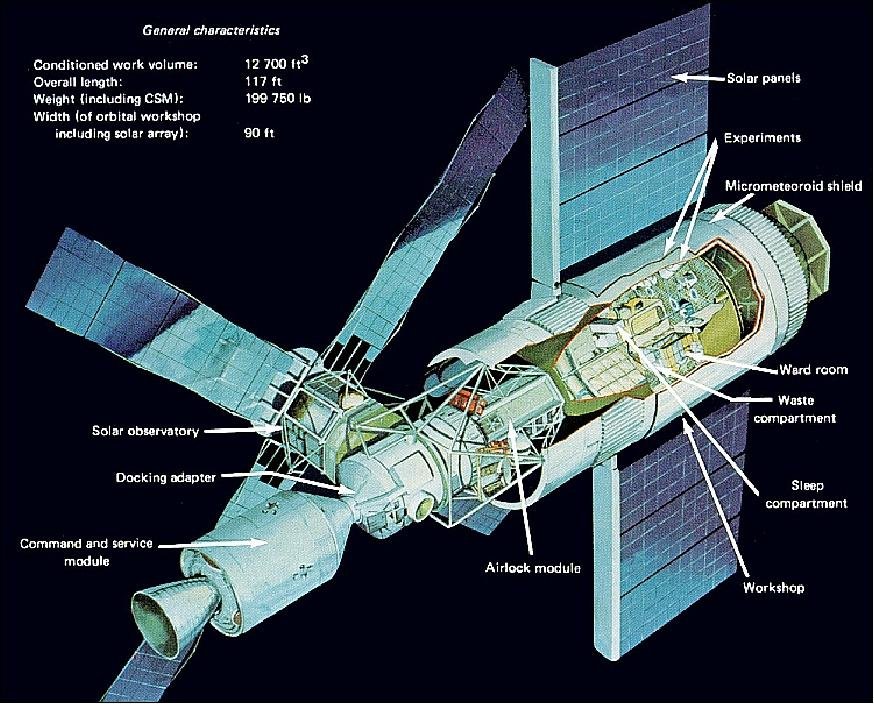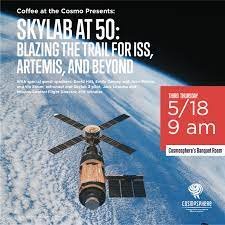NASA’s Skylab 50th anniversary: NASA stormed the Twitter to mark it
NASA’s Skylab 50th anniversary: Marking the 50th anniversary of the launch of the US’s 1st space station ‘Skylab’ in the space on May 14th 1973. During its launch, the space station hosted 3 crews of NASA in space, proving the hypothesis that human lives are possible in the space and we as humans can also work there, just marking the way for the human biggest investment, the International Space Station.
About the mission

Skylab was the first U.S. space station, launched into Earth orbit on May 14, 1973. It was developed as part of the Apollo Applications Program set up by NASA in 1965 to adapt spacecraft and systems developed for the U.S. Moon landing program to a variety of scientific missions. Skylab was a significant milestone in the history of space exploration. It was a precursor to the International Space Station, and it paved the way for a long-term human presence in space. Skylab was made up of two major components: the Orbital Workshop (OWS) and the Apollo Telescope Mount (ATM). The OWS was a modified third stage of a Saturn V rocket, while the ATM was a collection of solar telescopes and other instruments for studying the Sun.
Skylab’s primary goal was to investigate the effects of long-duration spaceflight on the human body. The three successive crews of visiting astronauts carried out a range of investigations in this regard, studying the human body’s adaptation to the space environment. They also undertook pioneering Earth-resources observations and made detailed observations of the Sun. Skylab was much roomier and capable of more research than the Soviet Union’s first-generation Salyut stations. The station was 30.2 meters (99 feet) in length and 6.7 meters (22 feet) in diameter, with a mass of about 75,000 kg (165,000 pounds). Despite being limited by its consumable resources, Skylab was able to carry out a wide range of scientific research.
The Apollo Telescope Mount was Skylab’s primary scientific instrument, and it incorporated a number of component telescopes and other devices for observing the Sun over a broad range of the electromagnetic spectrum. The ATM was able to study the Sun in unprecedented detail, and its observations greatly enhanced our understanding of the Sun’s behavior and its impact on Earth’s climate. Skylab was also able to undertake pioneering Earth-resources observations, including detailed studies of the Earth’s atmosphere, oceans, and land surfaces. This research has had a lasting impact on our understanding of the Earth’s environment and its relationship to human activity. Skylab was an impressive achievement in the history of space exploration, and it paved the way for many of the missions that followed. Its success demonstrated the feasibility of long-duration human spaceflight and provided a platform for a range of scientific investigations. Today, Skylab serves as a symbol of human ingenuity and our ongoing quest to explore and understand the universe around us.
- Marathi Sexy Girl Bike Riding Video: Watch Now
- Germany Faces Recession as Economy Contracts Unexpectedly
- TATA IPL 2023: क्या इस बार मिलेगा आईपीएल को नया चैंपियन , या फिर चैंपियन टीमें ही फिर मारेंगी बाजी
- CTTC Bhubaneswar Recruitment Notification: Various Posts Available
- Uppena fame Krithi Shetty had high hopes for Manamey, after multiple failed movie character



